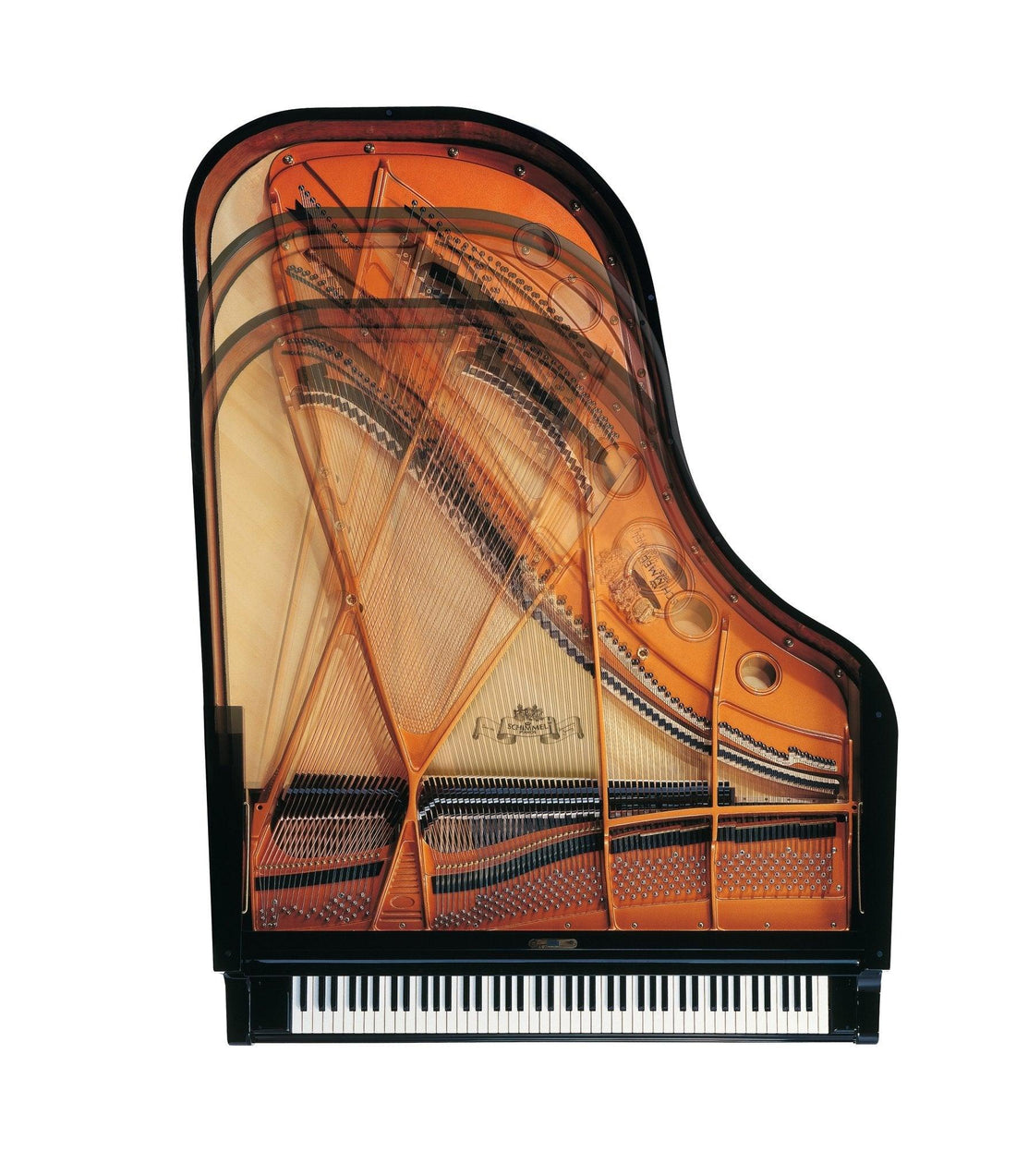|
WHY SIZE MATTERS An upright piano will be, at the very most, 5’ tall, whereas most grand pianos range between 5’ and 9’ in length. Since the length of the instrument determines the length of the strings and soundboard, generally speaking, longer strings and a soundboard with greater surface area will produce a richer sound quality. |
PERFORMANCE DIFFERENCES In terms of action(mechanism), the vertical action of an upright piano is inherently less responsive to that of a horizontal, grand piano. While the hammers in an upright piano rely on a spring to return to their rest position, the hammers in a grand piano’s action will return to their rest position purely due to their own weight. This allows for a much faster single note repetition ability on a grand piano and thus a more responsive action.
|
|
SPINET (36-40”) Spinets are the smallest of all vertical pianos. With a size of 36-40” a spinet’s action is compressed, requiring a rod mechanism to transfer force from the keys to the hammers beneath. Spinets are no longer manufactured and are often difficult to regulate and service. This type of piano is best recommended for beginner to intermediate pianists who would like to keep costs down as well as conserve space. CONSOLE (40-44”) Not only are console pianos excellent for those who are short on space, they often make beautiful furniture pieces. Most consoles have a full sized action that is located directly above the keys or is split between above and below. This kind of piano is perfect for beginner to advanced piano students who are in search of something that can serve as both a reliable instrument as well as a work of art. STUDIO UPRIGHT (45"-48”) You can commonly find these pianos in schools and churches. Though slightly more expensive than a console or a spinet, a studio piano is generally worth the extra money for gains in both action and sound quality. FULL-SIZE OR PROFESSIONAL UPRIGHT PIANO (48-52”) Ideal for the more advanced musicians who are looking for the richest possible sound from a compact instrument that takes up a limited amount of floor space. |
 |
 |
BABY GRAND (4½-5’) The smallest and, generally, the most affordable of grand pianos: A good, well-kept baby grand is the option for advanced/professional pianists who are in search of a richer sound from their instrument, with a more responsive action. Although a baby grand will consume considerably more square footage than any upright, it is still a compromise when compared with the larger grand models available. Excellent for school or home use. MEDIUM GRAND (5-7’) The intermediate size between baby and concert grands; a cared-for medium grand is, for all intents and purposes, a professional instrument. Perhaps the size of grand most commonly found in conservatories around the world, a medium grand (especially from 6’ and larger) will often bear a noticeable difference in sound quality when compared with that of a baby grand. CONCERT GRAND (7-9’) The largest of all piano sizes, a well-made concert grand in excellent condition can often be one of the most pristine and beautiful instruments you will ever hear. Often found in concert halls around the world (hence the name). |

